Crotch Reinforced Jeans: End Rips And Boost Denim Durability
A ripped jean crotch is a common and frustrating problem. That dreaded tear in the inner thigh or a “crotch blowout” can make you think your favorite denim is done for. But don’t worry, it’s usually a fixable issue.
This article provides easy-to-follow instructions on how to patch a ripped jeans crotch. We’ll cover different methods for denim repair, so you can choose the one that best suits your skills and the damage. Learning to fix ripped jeans not only saves money but also extends the life of your clothes.
1. Understanding the dreaded jean crotch blowout
A “crotch blowout” is when rips, tears, or holes appear in the crotch area of jeans. It happens because the fabric in this high-stress area wears thin from friction and tension, eventually breaking. This is a very common issue many jean wearers face and can happen with jeans of various prices or brands.
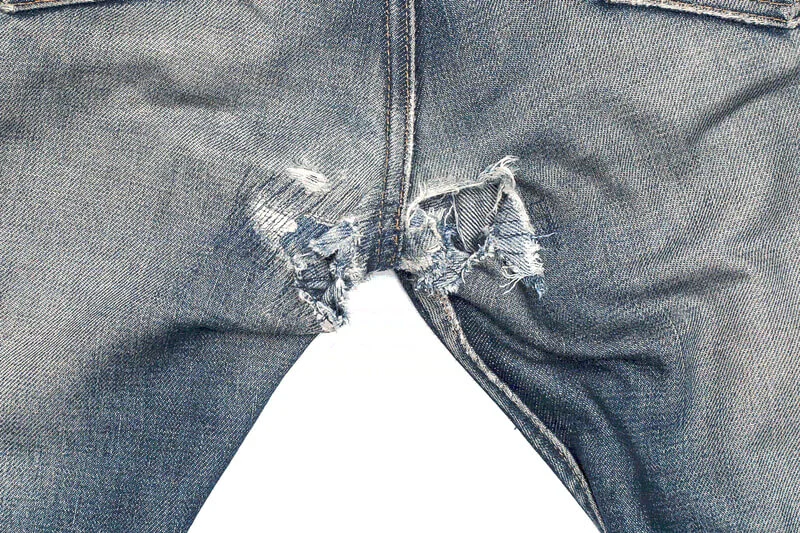
2. Why do jean crotches rip so easily?
2.1. Strain and tension
The crotch area experiences a lot of pulling and stretching from everyday body movements. This constant strain weakens the fabric fibers over time, making them more likely to tear. Specific activities and fit issues can concentrate this strain.
- Tight fit: When jeans are too snug in the thigh, seat, or rise, every movement like walking or sitting puts extra pulling force on the seams and fabric. This constant strain makes individual threads weaker.
- Wearing jeans too low: When jeans are worn much lower on the hips than they are designed for, the crotch hangs lower. This can cause the fabric to bunch up or pull in unusual ways during movement, creating new stress points that weren’t part of the jean’s original design.
- Activities: Certain activities put more extreme and repetitive stretching on the crotch fabric than everyday walking. Cycling involves repeated leg motion and pressure against the saddle. Deep bends like squatting during exercise or gardening stretch the crotch fabric to its limit. Other activities like climbing or dancing also stress this area.
2.2. Friction and abrasion
Friction is when surfaces rub together, and the resulting abrasion slowly thins out the fabric fibers in the jean crotch until they break.
- Thighs rubbing together: This is a very common reason for crotch blowouts. The constant rubbing of thighs with each step acts like very slow sandpaper on the denim, gradually wearing down the cotton fibers and making the fabric thinner and weaker.
- Bike saddles: Bike saddles are a major source of friction. The material of the saddle, the pressure of sitting, and the rubbing motion from pedaling all combine to wear away the fabric in the seat and crotch area of jeans very quickly.
2.3. Jean fabric and construction
The type of denim and how the jeans are made also play a big role in how easily the crotch might rip. Not all jeans are created equal in terms of durability.
- Fabric quality: Denim comes in different weights and qualities. Lighter-weight denim generally has less material and may wear through faster than heavier denim. While denim with elastane adds comfort, if the base denim is very thin or low quality, the stretch might not prevent tearing under stress.
- Wear and tear over time: All fabrics, including denim, naturally weaken with repeated use and washing. Frequent washing, especially in hot water or with harsh detergents, can accelerate the breakdown of cotton fibers. High heat from dryers can also damage and weaken fibers over time.
- Seam construction: The crotch is where multiple pieces of fabric meet, so the seams must be strong. If the thread is not strong enough or if the stitch type is unsuitable, the seams can unravel. Stronger threads, like polyester thread, are often used in quality construction because they are more resistant to breaking.
3. How to prevent crotch blowouts in your current jeans
You can take steps to protect your current jeans from premature crotch blowouts.
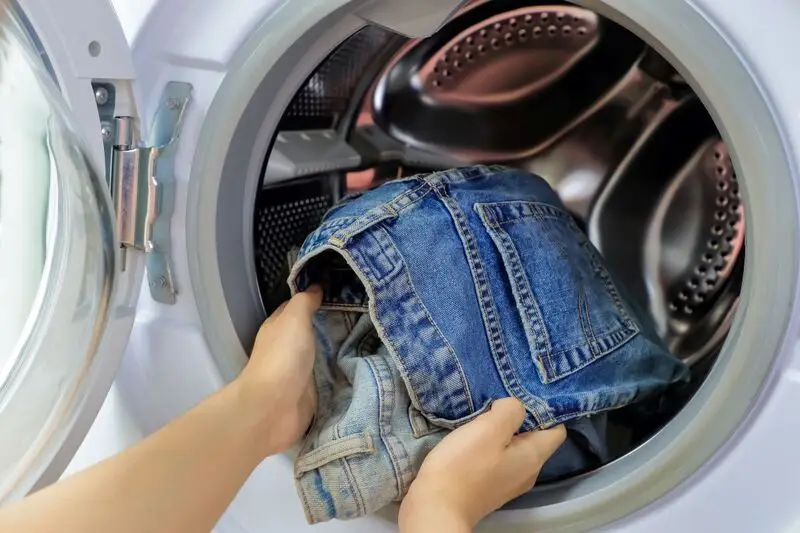
3.1. Choose the right fit
Fit is crucial. When trying on jeans, you should be able to move without them feeling uncomfortably tight or restrictive in the crotch, thighs, or seat. Do a few simple movements to check:
- Sit down.
- Bend your knees.
- Do a shallow squat or lunge.
A little extra room for movement reduces strain and can greatly extend the life of your jeans.
3.2. Wear jeans properly
Most jeans are designed to sit at a particular point on your body. Wearing them too low changes how the fabric drapes and where stress is applied, often putting more strain on the crotch. Try to wear your jeans closer to where the designer intended them to sit for best durability.
3.3. Be mindful during activities
The goal isn’t to stop being active, but to be aware that certain activities are harder on jeans. If you cycle frequently in regular jeans, expect more wear in the crotch. For activities involving lots of deep squats, consider using older jeans or work pants if possible to help your favorite pair last longer.
3.4. Practice smart jean care for longevity
How you care for your jeans significantly impacts their lifespan, especially in high-stress areas like the crotch.
- Wash less, wash gently: Every wash cycle causes wear. Spot clean small stains and air out jeans between wears. When you do wash them, turn them inside out, use cold water on a gentle cycle, and choose a mild detergent.
- Air dry whenever possible: Air drying is much gentler than a machine dryer, where high heat can damage and weaken cotton fibers over time.
- Store properly: Avoid stuffing jeans tightly into drawers, which can create sharp creases that stress the fabric. Fold them neatly or hang them up to allow the fabric to rest.
- Rotate your jeans: If possible, avoid wearing the same pair every day. Rotating through a few pairs gives the cotton fibers in each a chance to rest and recover from stress.
3.5. Reinforce thin spots early
Be proactive. If you notice an area in the crotch or inner thighs starting to look thin, reinforce it before it rips. This can be done by applying an iron-on patch to the inside of the jeans or by hand-sewing a small piece of fabric internally. This durable sew-on application can significantly delay a full blowout.
4. Crotch-reinforced jeans
Some jeans are specifically designed from the start to be stronger in the crotch area. These jeans have intentional features to improve durability, making them a great example of durable apparel design.
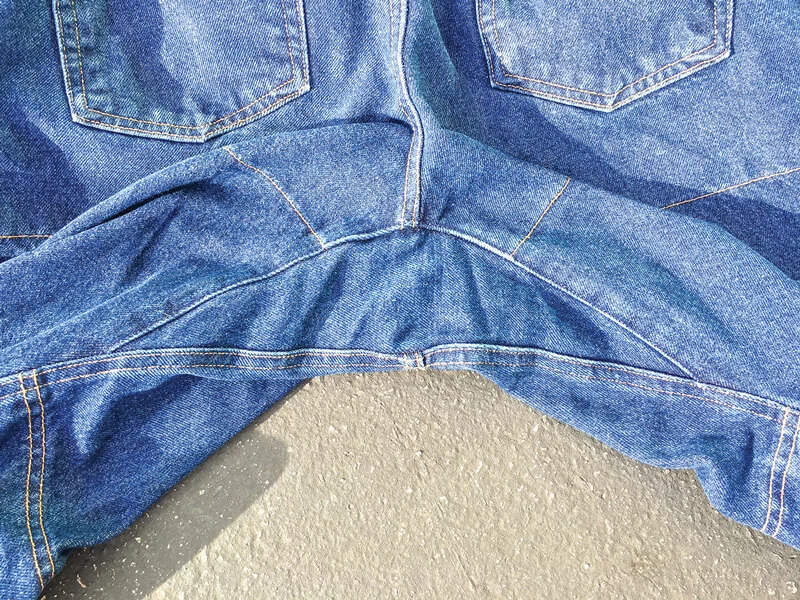
4.1. Key reinforcement techniques
Manufacturers use several smart techniques to reinforce the crotch. Here are some common ones:
- Gusseted crotch: A separate, often diamond-shaped, piece of fabric sewn into the seam where the legs meet. A gusset distributes stress over a wider area and adds room for movement.
- Extra fabric layer: An additional layer of denim or another strong fabric sewn onto the inside of the crotch area. This doubles the material that needs to wear through.
- Reinforced seams: Using stronger stitching methods like bar tacks at stress points, durable flat-felled seams, and heavy-duty thread like polyester thread.
- Strategic fabric use: Using a heavier weight or more durable weave of denim specifically for the crotch panels, putting the toughest fabric where it’s needed most.
4.2. The benefits of crotch-reinforced jeans
Investing in these jeans offers several advantages.
- Increased lifespan: This is the main benefit. These jeans last longer, meaning fewer replacements.
- Enhanced comfort and mobility: Gussets add fabric that allows for a greater range of motion, making the jeans more comfortable.
- Better value for money: While they might cost more upfront, they can save money long-term.
- Confidence during activity: Wearers can engage in activities without the constant worry of a sudden rip.
4.3. How to find crotch-reinforced jeans
Here’s how to identify and shop for them:
- Look for keywords: Check product descriptions for terms like “reinforced crotch,” “gusseted crotch,” or “durable construction.”
- Inspect visually: Look for gussets, feel for extra layers on the inside, and check for robust stitching like flat-felled seams.
- Consider fabric weight: Heavier denim (often 12oz or more) generally contributes to overall durability.
- Research brands: Workwear, skateboarding, and some motorcycle or outdoor apparel brands often offer reinforced jeans.
5. DIY crotch repair and reinforcement techniques
You can strengthen your jeans yourself, either before a rip happens or after.
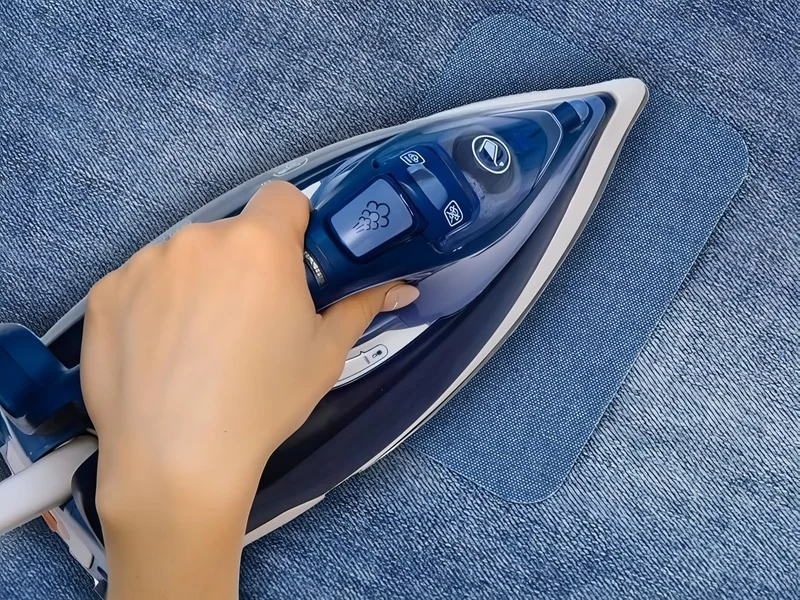
5.1. Reinforcing before a blowout
The best time to act is when you notice a weak spot. Check the inside of the crotch for areas where fabric looks worn or feels thinner.
- Internal iron-on patches: These are pre-made patches with heat-activated iron-on backing. Simply turn the jeans inside out, place the patch over the thin spot, cover with a cloth, and press with a hot iron. This is an easy, no-sew solution, but it may not be as durable as sewing.
- Internal sew-in patches: For a more durable and flexible solution, use a piece of strong fabric like denim scraps or canvas and sew it onto the inside. Pin the patch in place and use a needle and strong polyester thread to sew it down. This requires basic sewing skills but offers a superior result.
5.2. Fixing an existing crotch blowout
If you already have a hole, first trim any loose threads. Two common repair methods are darning and patching.
- Darning: This technique involves weaving new threads back and forth across a hole to create new fabric. It can be done by hand or with a machine and blends well if done carefully, but it can be time-consuming.
- Patching: This involves covering the hole with a strong piece of fabric. The patch should be at least 1/2 inch (1-2 cm) larger than the hole on all sides. You can apply it to the inside for a less visible repair or to the outside as a style statement. Hand-sew with a strong backstitch or use a sewing machine for the most durable fix.
5.3. Essential tools for DIY jean repair
Having these tools on hand will make your repair job easier:
- Sturdy needles for denim
- Strong thread, such as polyester thread
- Sharp scissors
- Pins
- Fabric for patches
- Iron and ironing board
5.4. When to call a professional
Not everyone is comfortable with DIY sewing. For very large or complex rips, or for a professional finish on expensive jeans, a tailor is a great option. They have the specialized machines and experience to do the job right.
6. Other jean features that aid crotch durability
Some features, while not labeled as “reinforcement,” naturally make jeans more durable in the crotch.
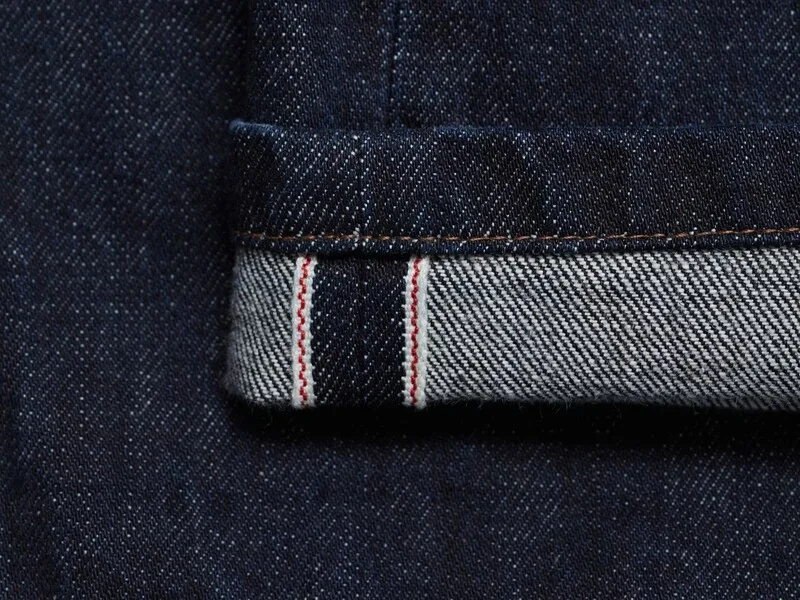
6.1. Denim weight
Denim weight is measured in ounces per square yard. Heavier denim (13oz+) has more cotton fibers, making it thicker, stronger, and more resistant to wear. This significantly contributes to overall durability.
6.2. Denim quality
Raw denim is unwashed, untreated denim that is often stiffer initially but can be very durable. Selvedge denim, made with a self-finished edge, is often associated with higher quality cotton and construction, leading to better longevity.
6.3. Overall construction
Good quality construction shows in neat, dense stitching, strong seams, and quality hardware. This attention to detail throughout the garment usually translates to better overall durability, including the crotch.
7. Frequently asked questions (FAQs)
7.1. Are reinforced crotch jeans just for men?
No, definitely not. Crotch blowouts affect anyone who wears jeans. The need for reinforcement depends more on an individual’s activity level and body shape, not gender.
7.2. Do reinforced jeans feel bulky?
Generally, no. Well-designed reinforced jeans aim for durability without sacrificing comfort. A gusset often improves comfort and mobility, while an internal patch is usually not noticeable to the wearer.
7.3. Can I reinforce any pair of my jeans?
Yes, absolutely. The DIY methods described earlier, such as applying iron-on or sew-in patches, can be used on almost any pair of jeans to improve crotch durability or repair existing wear.
7.4. Where are the best places to find crotch-reinforced jeans?
Look for them at workwear brands and stores, specialty activewear brands (skateboarding, BMX, cycling), and outdoor apparel retailers. When searching online, use keywords like “reinforced crotch jeans” and “gusseted jeans.”
Explore more:
Understanding the common causes of a jean crotch blowout is the first step toward building a more durable wardrobe. By choosing jeans with features like gussets and reinforced seams, or by applying your own DIY reinforcements, you are investing in longevity and can wear your denim with confidence.
This commitment to durability isn’t just for consumers—it’s a powerful statement for apparel brands. When a garment is built to last, its branding should be too. Packlove specializes in creating rugged, high-quality branding elements that match the strength of your products. Elevate your durable designs by exploring our custom options today.






















